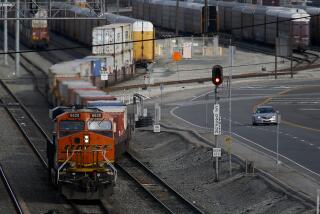Up in smoke
With summer fast approaching, outdoor enthusiasts will soon launch thousands of boats and personal watercraft into rivers, lakes and the ocean, unleashing a huge pulse of smog-forming exhaust into California skies.
Manufacturers post booming sales and produce even more permutations of vessels -- personal watercraft, kayaks, ski boats and pontoon party barges, to name a few. Although powerboats are a staple of the season, they are hard on the environment, especially in California, which has about 900,000 such registered vessels, the highest in the nation.
A major source of pollution is how Jerry Martin, spokesman for the California Air Resources Board, characterizes them. “Those engines are not nearly as well controlled as cars,” he says. “They drop a good portion of fuel back into waterways that are our sources of drinking water, and these small engines are inefficient and produce a lot of emissions.”
On a typical summer weekend, officials say engines statewide release about 390 tons of air pollutants daily, 10% of all the emissions from mobile sources, a category that includes cars, buses, trucks and other vehicles.
In the Los Angeles region, recreational boats emit nearly four times as many smog-forming fumes as all of the area’s oil refineries, according to the South Coast Air Quality Management District. Although recent regulations have resulted in dramatically cleaner new vessels, the state air board estimates one 5-year-old personal watercraft steered for seven hours produces the same emissions as a new car driven 100,000 miles.
Some of the emissions consist of volatile gases and combustion byproducts that, when mixed in sunlight, form ozone. Ozone, a widespread and poisonous gas, causes chest pains, nausea and headaches and long-term exposure can lead to loss of lung function. California has the worst ozone pollution in the nation.
But other pollutants, such as carbon monoxide, can be acutely toxic. Boat exhaust has been linked to dozens of fatalities in California and the West as swimmers, bathers and water skiers unwittingly inhale the odorless gas and drown. To prevent such accidents, Gov. Arnold Schwarzenegger last year banned the controversial practice of “teak surfing,” in which riders hang from the stern of a moving boat.
Air quality officials say boat pollution is particularly troublesome because emissions increase during the summer when smog is already at its worst. Stagnant air, bright sunlight, long days and high mountains make most of inland California a smog trap.
Emissions from powerboat engines have generally been overlooked by regulators who have targeted more conspicuous sources of air pollution. Many vessels are powered by inefficient two-stroke engines, which burn approximately 60% of their fuel. The rest, according to air quality officials, is discharged into the environment. Also, it is harder to affix catalytic converters to these motors than land-based engines.
But the good news is that power boats are running cleaner as manufacturers and regulators develop and apply new technologies to vessels.
“Boats coming off the factory floor are very clean and [produce] low emissions. The manufacturers have done a good job,” says David Johnson, spokesman for the state Department of Boating and Waterways.
The state air board and the U.S. Environmental Protection Agency have adopted stringent new regulations that force manufacturers to reduce emissions from outboard motors and personal watercraft by 95% by 2008. Meanwhile, other regulations require manufacturers to install catalytic converters that will cut emissions from inboard and stern-drive engines by 35% by 2009. Later this month, regulators, manufacturers and engineers at the Southwest Research Institute in San Antonio, Texas, will test new catalytic converters for inboard and stern-drive recreational boats.
“We’ve got quieter, cleaner, bigger-performing engines. There’s no more blue smoke that comes out these new engines,” says John McKnight, director of environmental and safety compliance for the National Marine Manufacturers Assn., which represents 1,400 companies that make 80% of the nation’s marine products.
But the new regulations and advanced technology apply only to the 350,000 new engines sold annually. Meanwhile, millions of older, dirtier boats remain in service with no plans to clean them up.
“Pleasure boats are a significant source of smog-forming emissions. Pleasure boats are a mixed category; some are very dirty and some are a lot cleaner,” says Sam Atwood, spokesman for the Air Quality Management District. “They are a major source of smog-forming emissions and we’re going to need more reductions.”
More to Read
Sign up for Essential California
The most important California stories and recommendations in your inbox every morning.
You may occasionally receive promotional content from the Los Angeles Times.










